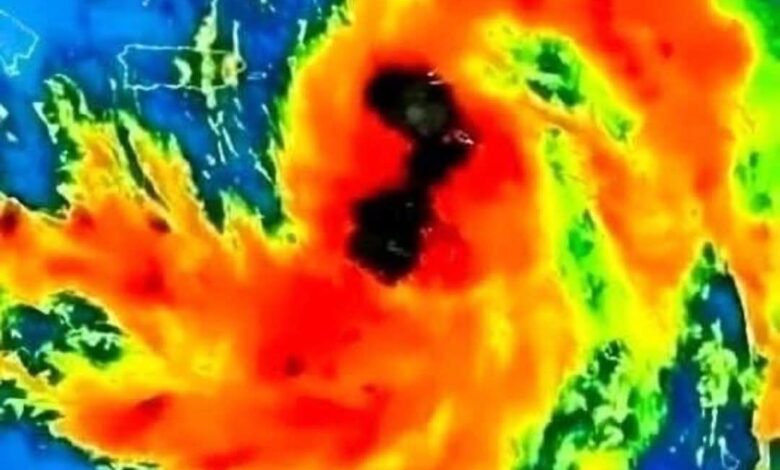The Atlantic hurricane season is proving relentless, with a new wave of extreme weather now forming across multiple regions. From the Caribbean to the Southeast United States, meteorologists are tracking a volatile mix of tropical storms, flooding, earthquakes, and dust clouds. Communities that are already strained by recent disasters are now bracing for the possibility of even more dangerous conditions in the days ahead.
Forecasters have issued heightened alerts for the southeastern United States, where conditions are ripe for new tropical development. Early data suggests that Tropical Storm Flossie could form soon, bringing heavy rains, strong winds, and coastal flooding to parts of Florida, Georgia, and the Carolinas. While exact projections are still uncertain, the system has already shown signs of organization in warm Atlantic waters, and the National Hurricane Center warns that rapid intensification cannot be ruled out. Residents across the region are being urged to prepare emergency supplies, review evacuation plans, and stay alert to changing forecasts.
But the threat isn’t confined to the U.S. coastline. In Central America, torrential rainfall has triggered catastrophic flooding, washing away roads, bridges, and farmland. Entire communities have been cut off as rivers overflow their banks, leaving rescue crews scrambling to reach stranded families. The hardest-hit regions are reporting thousands of people displaced, with shelters filling quickly and fears rising over the spread of waterborne illnesses. Emergency responders are warning that conditions could deteriorate further if rain bands connected to the developing tropical system sweep across the region.
Meanwhile, the Caribbean is facing its own set of challenges. A powerful dust plume, originating from the Sahara Desert and drifting across the Atlantic, has blanketed Puerto Rico, Jamaica, and surrounding islands in a thick haze. While Saharan dust events are not unusual during the summer months, this latest cloud is among the heaviest in recent years. Health officials are cautioning residents to limit outdoor activities, particularly those with asthma or respiratory conditions, as fine particles in the air can cause coughing, wheezing, and breathing difficulties. Reduced visibility has also impacted air travel, forcing delays and diversions at regional airports.
Adding to the turmoil, seismologists have confirmed a significant earthquake near Trinidad. The tremor, which struck with little warning, rattled homes and businesses and left residents fearful of aftershocks. While initial reports indicate limited structural damage, the psychological impact of an earthquake occurring amid ongoing tropical threats has deepened anxiety throughout the region. Authorities are monitoring the situation closely, especially in coastal zones where the risk of landslides or secondary flooding remains elevated.
Experts say this cluster of extreme events highlights the interconnectedness of global climate systems. Warmer ocean waters are fueling more intense tropical storms, while shifting atmospheric patterns are driving dust clouds farther west across the Atlantic. Combined with the natural volatility of earthquakes in the Caribbean Basin, the result is a perfect storm of overlapping crises. For vulnerable communities with limited resources, each new blow makes recovery harder.
In the United States, officials are preparing for potential landfall scenarios. Emergency management agencies in states along the Gulf and Atlantic coasts are stockpiling sandbags, readying shelters, and coordinating with the Federal Emergency Management Agency (FEMA). Utility companies are staging crews in anticipation of power outages, while hospitals are reviewing contingency plans should storm surges or flooding disrupt critical infrastructure. Coastal towns, many of which are still rebuilding from past hurricanes, are particularly concerned. Even a weaker tropical storm can cause millions of dollars in damage when paired with high tides and saturated ground.
Meteorologists emphasize that the coming days are critical. The tropical disturbance in the Atlantic is hovering over unusually warm waters, which provide the fuel for rapid strengthening. If conditions align, what is currently a disorganized system could intensify into a named storm within 24 to 48 hours. Should Tropical Storm Flossie form, it would be the next in a string of storms in a season already tracking above average. Climatologists warn that with ocean temperatures continuing to rise year after year, these kinds of explosive developments may become more common.
While forecasts often focus on the U.S. mainland, experts stress that the Caribbean and Central America will likely bear the brunt of early impacts. Rural areas with fragile infrastructure are especially at risk, as floods and landslides can cut off access to clean water, food, and medical care. International aid organizations are already preparing to deploy relief supplies, but accessibility remains a challenge in regions where roads have washed out and airports are struggling with reduced visibility from dust clouds.
Public health authorities are also raising alarms about the compounding effects of these crises. Flooding increases the risk of mosquito-borne illnesses such as dengue and Zika, while dust inhalation worsens chronic respiratory conditions. Earthquakes can disrupt sanitation systems, adding another layer of complexity. For families already stretched thin, these overlapping disasters are not just physical threats but emotional burdens.
Communities across the affected regions are responding with resilience. Local leaders are organizing neighborhood watch groups to check on vulnerable residents, while churches and community centers are opening their doors as shelters. In Puerto Rico, volunteers are distributing masks to protect against dust inhalation, while in Central America, local farmers are working together to salvage crops before more rain arrives. Along the U.S. coast, hardware stores are reporting surges in demand for plywood, generators, and bottled water as residents prepare for the worst.
As always with extreme weather, preparation and communication are key. Experts advise families to have emergency kits stocked with essentials—water, non-perishable food, medications, flashlights, and batteries. Knowing evacuation routes and having a plan for pets and elderly relatives can make a life-saving difference. Officials also urge the public to rely on trusted news sources rather than rumors on social media, as misinformation during storms can spread panic and confusion.
The coming week will determine just how severe these overlapping crises become. If Tropical Storm Flossie forms and tracks toward the southeastern United States, it could bring destructive winds and flooding. If rainfall continues in Central America, displacement and food insecurity will grow. If dust clouds linger in the Caribbean, respiratory health will remain at risk. And if aftershocks follow the earthquake near Trinidad, already shaken residents will face renewed fear.
For now, all eyes remain on the Atlantic. The systems at play are vast, unpredictable, and powerful. For millions of people across the Americas, the challenge is the same: to endure, to prepare, and to hope that the storms, the floods, the dust, and the tremors will pass without leaving devastation in their wake.
What is unfolding is more than just a weather report—it is a stark reminder of human vulnerability in the face of nature’s force. The planet is changing, the patterns are shifting, and communities everywhere are learning, again and again, that readiness is the only defense against the unpredictable.


